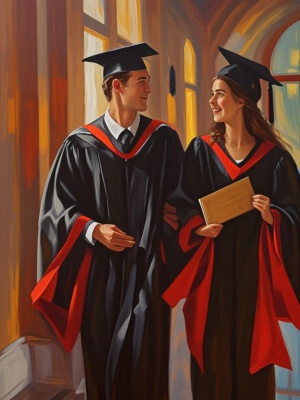The Art of Horse Racing Oil Painting: A Timeless Tradition
Introduction
Horse racing oil painting has long been a celebrated art form, capturing the dynamic energy and elegance of these magnificent animals in motion. From historical race scenes to modern interpretations, these paintings offer a unique blend of artistic skill and equestrian passion. Whether you're an art collector, horse racing enthusiast, or simply appreciate fine art, understanding the nuances of horse racing oil paintings can deepen your appreciation for this specialized genre.
In this comprehensive guide, we'll explore the rich history, techniques, and contemporary applications of horse racing oil paintings. We'll also examine how modern technology, including AI painting tools, is influencing this traditional art form.

The Historical Significance of Horse Racing Paintings
Early Depictions of Equestrian Sports
The tradition of horse racing paintings dates back centuries, with some of the earliest examples appearing in 18th century England. Artists like George Stubbs revolutionized the genre with their anatomically precise depictions of racehorses. These paintings served not only as artistic expressions but also as documentation of important races and bloodlines.
Famous Horse Racing Artists Through History
- George Stubbs (1724-1806) - Known for his scientific approach to equine anatomy
- Alfred Munnings (1878-1959) - Captured the excitement of early 20th century racing
- Edgar Degas (1834-1917) - Famous for his impressionist racing scenes
Techniques in Creating Horse Racing Oil Paintings
Capturing Motion and Energy
One of the greatest challenges in horse racing oil painting is conveying the sense of speed and power. Artists achieve this through careful brushwork, with visible strokes that suggest movement. The positioning of legs, the flow of manes, and the tension in the horses' muscles all contribute to this dynamic effect.
Color and Composition
The color palette in horse racing paintings often features earthy tones for the track and vibrant colors for jockey silks. Composition typically follows the rule of thirds, with the focal point being the lead horse or a dramatic moment in the race. Many artists study actual races or use reference photos to ensure accuracy in their depictions.
Modern Approaches to Horse Racing Art
Contemporary Artists Keeping the Tradition Alive
Today's artists continue the tradition while incorporating modern styles. Some focus on hyper-realism, creating paintings nearly indistinguishable from photographs. Others take more abstract approaches, using bold colors and expressive brushwork to convey the emotion of the race.
The Role of Technology in Equestrian Art
Digital tools and AI are changing how artists create horse racing paintings. Programs can now assist with:
- Perspective and proportion
- Color matching and mixing
- Creating preliminary sketches
However, as discussed in our AI art guide, these tools complement rather than replace traditional artistic skills.
Collecting and Preserving Horse Racing Paintings
What to Look for in Quality Paintings
When collecting horse racing oil paintings, consider:
- Artist reputation and provenance
- Quality of materials (canvas, paints, varnish)
- Anatomical accuracy of the horses
- Emotional impact of the composition
Preservation Techniques
Proper care ensures these artworks last for generations. Key preservation methods include:
- Keeping paintings away from direct sunlight
- Maintaining stable temperature and humidity
- Professional cleaning and restoration when needed
Conclusion
Horse racing oil painting remains a vibrant and evolving art form that bridges tradition and innovation. From its historical roots to modern interpretations, these paintings continue to capture the thrilling essence of the sport. Whether created through traditional methods or with the assistance of new technologies, quality horse racing paintings offer timeless beauty and serve as valuable pieces of sporting history.
For those interested in exploring related art forms, our portrait transformation guide offers insights into converting photographs into artistic masterpieces. The world of equestrian art continues to grow, offering endless possibilities for artists and collectors alike.